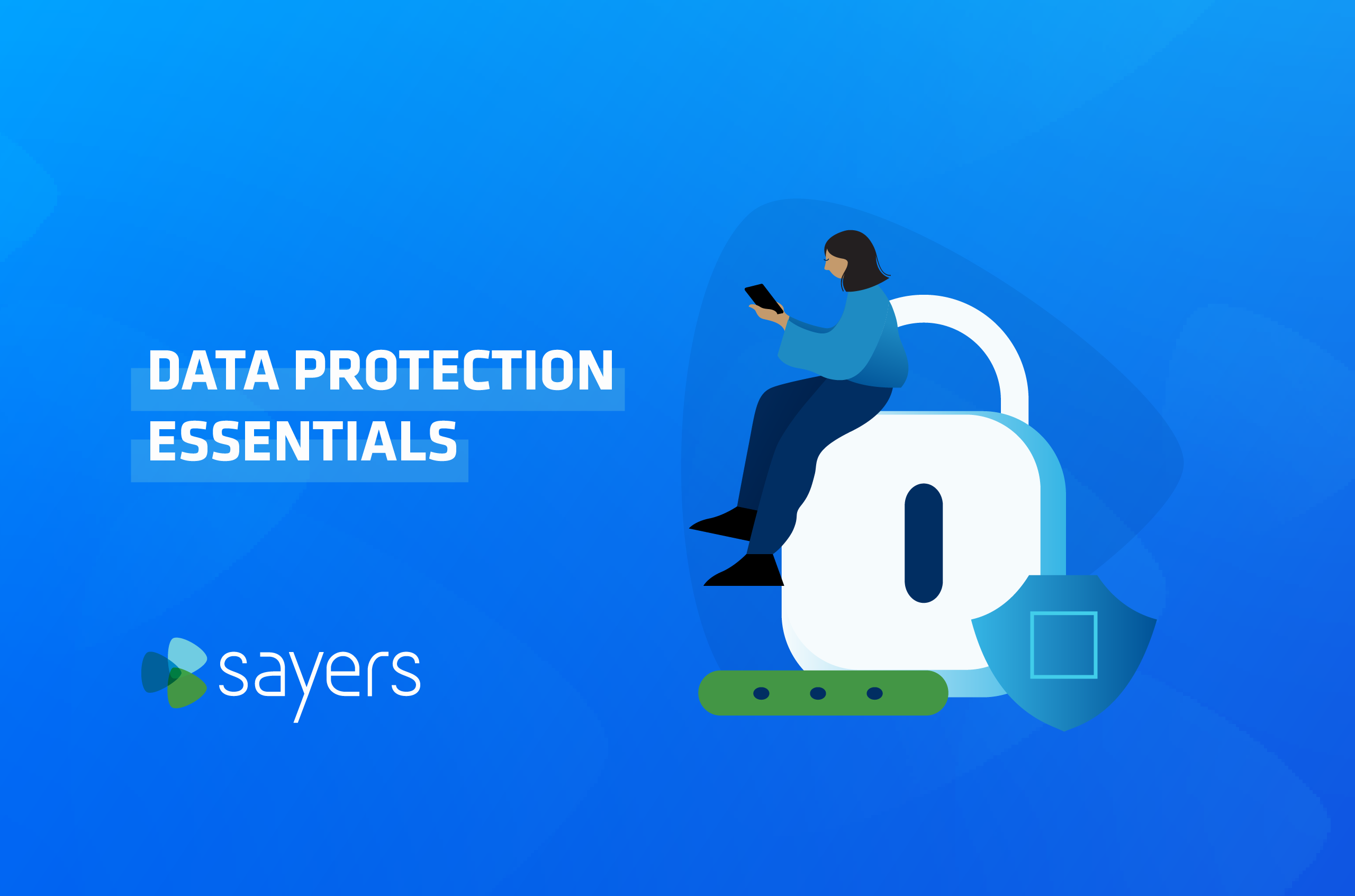Master Data Protection: Essential Strategies for Your Business
Posted June 6, 2024 by Sayers

The relentless drumbeat for data protection and data backups leaves organizations wondering if they’re doing everything they can to safeguard their data. The challenge includes protecting customers’ data privacy, adhering to compliance regulations, and recovering organizational data after cyberattacks and natural disasters.
Cybercriminals are going after your data, including your backups. Bad actors who can corrupt an organization’s backups have more leverage in demanding ransom payments. According to the Veeam 2023 Ransomware Trends Report:
93% of ransomware attacks attempted to destroy backup data. Cyber villains were able to affect the backup repositories in 75% of attacks.
Those compromised organizations no longer had clean, safe backups to restore from, without risk of re-infection during restoration.
Fortunately, there are solutions to safeguard your sensitive information and quickly recover from a disruption. But first, let’s clarify the terminology we’re using.
Data Protection And Data Security: What’s The Difference?
The distinction between data protection and data security has begun to blur, as data protection vendors are adding some data security features to their data protection devices and services.
In general:
- Data protection uses methods such as data backups to keep data available, compliant with privacy laws, protected from corruption, and easily restorable after a disruptive event such as a ransomware attack or natural disaster. This protection can encompass everything from personal information to intellectual property. Data protection has become a critical aspect of maintaining trust, compliance, and business resiliency.
- Data security aims to keep data safe from unauthorized access and theft, such as ransomware attacks. Solutions use techniques such as encryption, data masking, access management, and threat detection.
Why Data Protection Matters
Data protection isn’t a one-time task, it’s an ongoing commitment with multiple areas of importance:
- Legal/Compliance. Regulatory frameworks such as the General Data Protection Regulation (GDPR), California Consumer Privacy Act (CCPA), and Health Insurance Portability and Accountability Act (HIPAA) require organizations to protect customer data or face hefty fines.
- Reputation: Any data loss can tarnish your brand’s reputation. Failure to safeguard customers’ data can erode the trust your customers and other stakeholders have in your organization.
- Business resiliency. Data loss can disrupt operations and lead to financial losses. Companies that react to a cyber event, rather than anticipating and preparing for it, pay a high cost. According to IBM Security’s Cost of a Data Breach Report 2023, the average cost of a data breach reached nearly $4.5 million in 2023 – an all-time high for the report and a 15% increase over three years.
- Competitive edge. Demonstrating robust data protection practices can set your company apart from competitors.
Consider These Factors For Your Data Protection
The best approach is a proactive one, so plan your data protection strategy before you need it. Questions to consider include:
- How confident are you that you can quickly recover from a ransomware event? If your data security doesn’t prevent a ransomware attack, will your organization be able to get back up and running quickly? How complete are your Disaster Recovery plans, and when was the last time they were successfully tested? Will you be able to meet your:
- Recovery Time Objective (RTO) – the period of time following an incident within which a product or service or an activity must be resumed, or resources must be recovered.
- Recovery Point Objective (RPO) – the point in time to which data is restored and/or systems are recovered after an outage.
According to the Veeam survey of 1,200 IT leaders, organizations attacked by ransomware took an average of 24 days to complete their recovery. That translates to 136 business hours of downtime from the average attack.
According to Steve Johnson, Senior Solutions Architect at Sayers:
“An environment that is ransomware-ready and cyber-resilient, with strong data protection policies, procedures, and backups in place, can get back up and running within one week or even a matter of hours, compared to 24 days.”
- Where are you storing your backups? Is it on-premise? In the cloud? A longstanding backup strategy has used the 3-2-1 approach: have three different copies of your data, on two different types of media, with one of those copies located offsite.
- Are your backups immutable and air-gapped? Sayers recommends a more comprehensive 3-2-1-1-0 backup rule for recoverability, with one of the copies offline, air-gapped (isolated), and/or immutable (unalterable), and automated backup testing should show zero errors.
Kevin Finch, Senior Business Continuity Architect at Sayers, says:
“Clean backups are paramount because they remain the last line of defense for both disaster recovery (DR) and ransomware recovery. You’re even more likely to need to recover from a cyber event than a DR situation.”
- Have you considered Backup as a Service (BaaS) and DR as a Service (DRaaS) options?Solutions such as Veeam Data Cloud can be an easy and inexpensive way to have an offsite copy of your data available, so you can quickly recover lost or stolen data. Simply offload the hosting and management of backup and restore applications to the as-a-service provider.
Data Protection Solutions: A Look At Vendor Capabilities
Modern data protection platforms cover on-premise and public cloud workloads. Native backups offered by cloud service providers such as Microsoft Azure and AWS are cost-effective and have low administrative overhead. However, they aren’t sufficient for ransomware recovery due to drawbacks such as lack of integrations, slow server restore times, and lack of granular backup policy options.
Consider data protection solutions from market leaders such as Veeam, Commvault, Rubrik, and Cohesity. All earned spots as top-tier leaders in the 2023 Gartner Magic Quadrant for Enterprise Backup and Recovery Software Solutions.
Questions? Contact us at Sayers to determine the right data protection solution to meet the needs of your business.
Interested in more Sayers blogs? Subscribe below!


